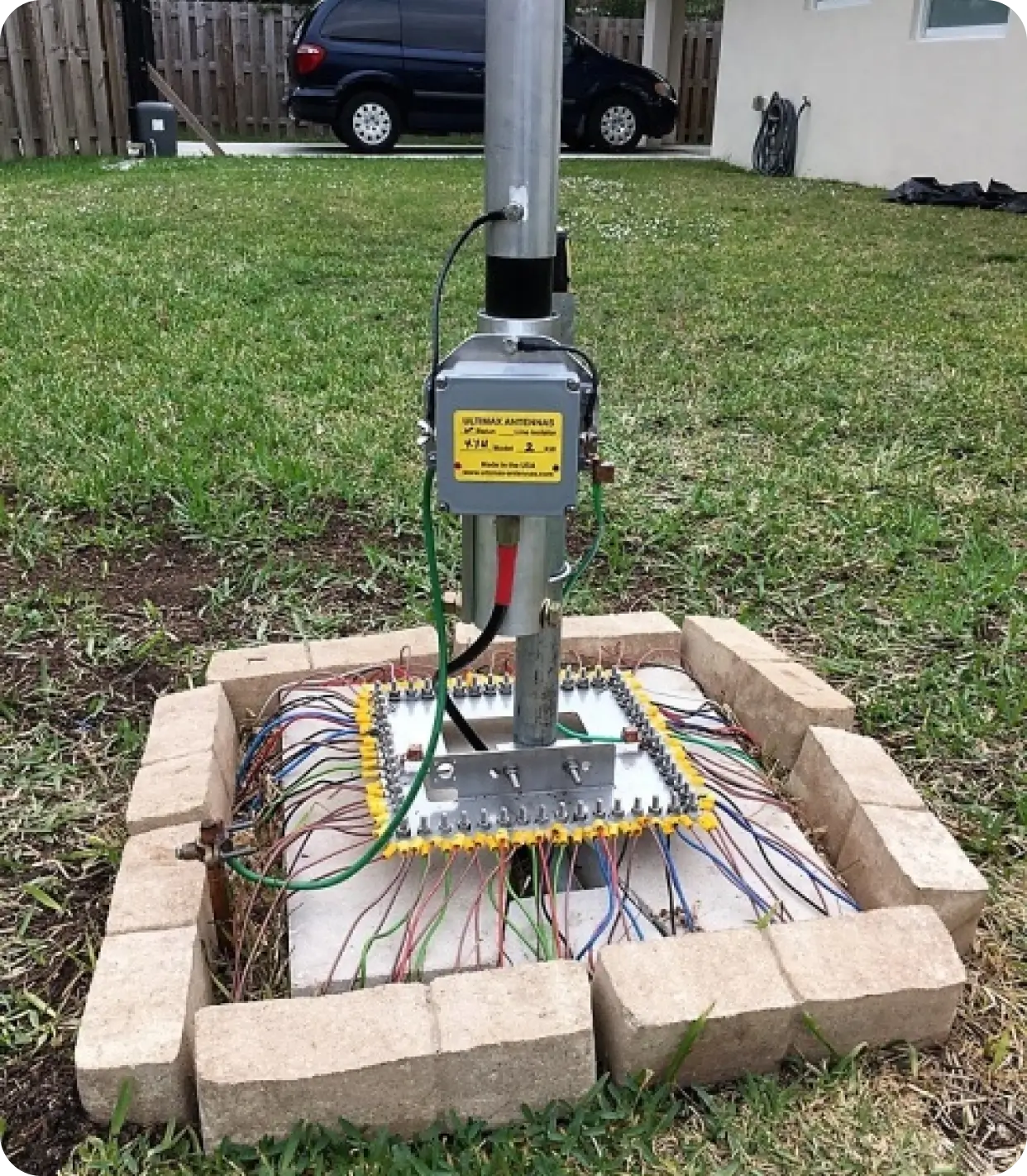ULTIMAX FAQ’S
Why ULTIMAX Antennas
We perform rigorous testing and quality control on all of our ham radio antennas to ensure that they meet our high standards for performance and reliability. This includes testing for SWR, gain, radiation pattern, and other key performance metrics to ensure that our antennas deliver optimal signal strength and low interference.

Made in the USA
We are proud to say that all of our raw materials are purchased in the USA. All of our antennas are manufactured and assembled in the USA.

We stand behind our Products
We offer a full, unconditional one-year warranty on every antenna model that we sell.

The maximum range you can expect from a ham radio antenna will depend on a variety of factors, including the frequency range you are operating in, the power output of your radio, and the terrain and obstructions in your area.
The proper installation of the antenna will ensure better performance for local and Dx operations. Follow the instructions properly on the unit purchased to get the best possible results.
Yes, we offer technical support for our ham radio antennas. Please contact our customer service team for assistance with any technical questions or issues.
The right ham radio antenna for your needs will depend on several factors, such as the frequency band you want to operate in, the location and height of your antenna, the amount of space you have available for installation, and your budget. Our customer service team can help you select the best antenna for your specific needs.
The best way to install a ham radio antenna will depend on the specific type of antenna and your particular installation location.
For most end-fed antennas, the Sloper fashion is the best choice, and for the Bazooka antennas, the Inverted V fashion is the best. Check the product page for the installation instructions to help make the best installation possible.
Yes, it is possible to use multiple ham radio antennas at once, although it can be complex and requires careful planning and installation. Also, the consideration of using Band-Pass filtering at the operation point if they’re to be used at the same time. Please consult with a professional or experienced ham radio operator for guidance.
Some antennas may require additional mounting hardware or accessories besides the common coax or grounding, some may require the use of an external antenna tuner unit, and some radio tuners may not be too part.
Follow the common standards for any installation and keep safety in mind.
